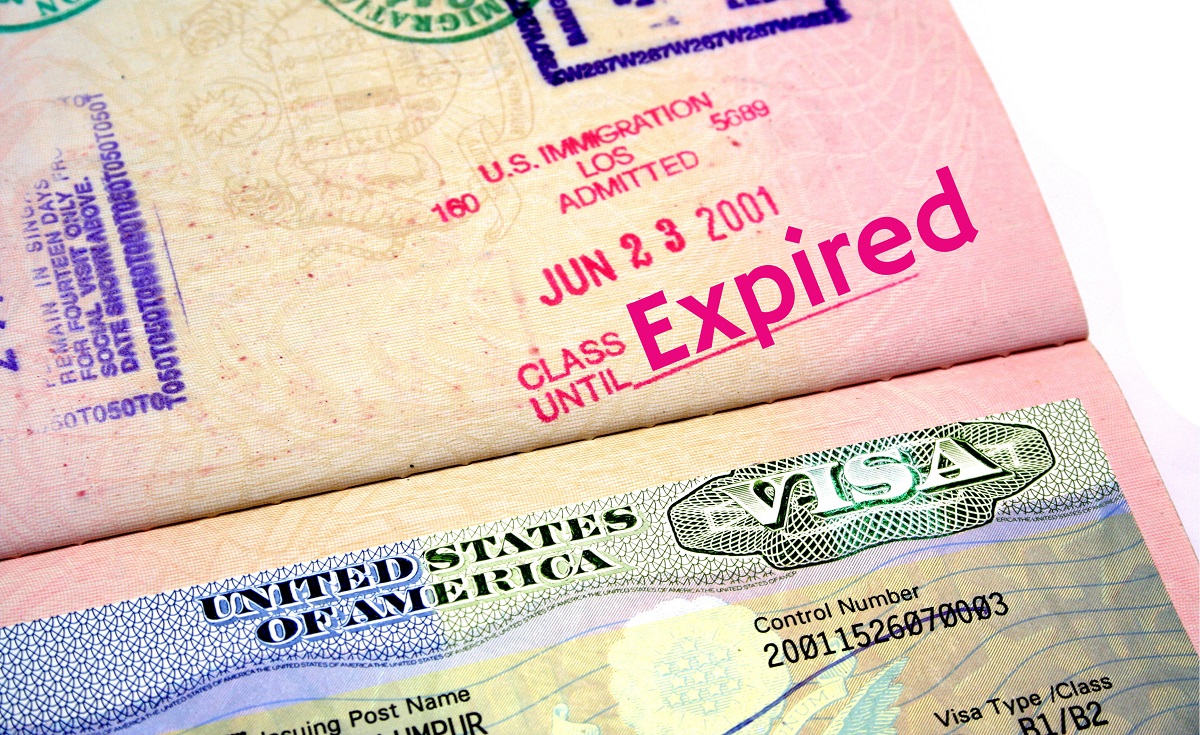
Navigating the complexities of U.S. immigration law can be challenging, especially for F-1 and J-1 visa holders. These visas, designed for international students and exchange visitors, come with specific rules and timelines that must be adhered to. Unfortunately, overstaying a student visa can have serious consequences that may affect your ability to remain in or return to the United States. This guide aims to provide a clear understanding of what happens if you overstay your F-1 or J-1 visa and how to address the situation if it occurs.
Understanding Visa Expiration vs. Duration of Status
Immediate Consequences of Overstaying a Student Visa
Long-Term Consequences of Overstaying
Steps to Take if You Overstay Your F-1 or J-1 Visa
How to Avoid Overstaying Your Student Visa
Common Scenarios Leading to Overstay
Myths About Overstaying F-1 or J-1 Visas
Understanding Visa Expiration vs. Duration of Status
One of the most common misconceptions among F-1 and J-1 visa holders is the difference between the visa expiration date and the duration of status. The expiration date on your visa stamp indicates how long you can use the visa to enter the United States. It does not determine how long you are authorized to stay.
For F-1 and J-1 visa holders, the duration of status (D/S) notation on your Form I-94 Arrival/Departure Record that governs your authorized stay. This means you can remain in the U.S. as long as you comply with the terms of your visa, such as maintaining full-time enrollment or actively participating in your exchange program.
Overstaying occurs when you remain in the U.S. beyond the date authorized on your I-94 or fail to maintain your visa status. Here are the potential consequences of overstaying.
Immediate Consequences of Overstaying a Student Visa
Overstaying a student visa can trigger immediate and significant repercussions, many of which can disrupt your ability to continue your studies, travel, or remain in the United States. These consequences are enforced to maintain the integrity of the immigration system and ensure compliance with visa regulations. Below are the key issues that arise from overstaying.
Loss of Status
Overstaying your visa automatically results in the loss of your lawful status. This means you are no longer eligible for the benefits associated with your visa, such as transferring schools, traveling internationally, or applying for an extension.Termination of SEVIS Record
For F-1 and J-1 visa holders, the Student and Exchange Visitor Information System (SEVIS) record is essential. Overstaying can result in the termination of your SEVIS record, making it difficult to reinstate your status.Unlawful Presence
Unlawful presence begins accruing the day after your authorized stay ends. This can have significant repercussions, particularly if you remain in the U.S. for an extended period.
Long-Term Consequences of Overstaying
While the immediate effects of overstaying your F-1 or J-1 visa can disrupt your current plans, the long-term consequences can significantly impact your future opportunities in the United States. These repercussions extend beyond your immediate status and may affect your ability to secure visas, travel, or build a life in the U.S. Here are the most critical long-term implications to consider.
Three- and Ten-Year Bars
Accruing unlawful presence of more than 180 days but less than one year may result in a three-year bar from re-entering the U.S. Unlawful presence of one year or more can result in a ten-year bar.Ineligibility for Future Visas
Overstaying may make you ineligible for future visas or adjustments of status. Consular officers reviewing your visa application will likely view an overstay negatively, even if you have a strong case otherwise. This violation will be detrimental if you are pursuing employment-based green card.Increased Scrutiny During Travel
If you attempt to travel to the U.S. in the future, you may face heightened scrutiny at ports of entry. Immigration officers may question your intentions and history, making the process more difficult.
Steps to Take if You Overstay Your F-1 or J-1 Visa
If you realize you have overstayed your student visa, it’s important to act promptly. Here are some steps you can take:
Understand the Extent of Your Overstay
Check your I-94 record to confirm your authorized duration of status. This will help you determine how long you have overstayed and the potential consequences.
Seek Legal Advice
Consult with an experienced immigration attorney. They can evaluate your situation and provide guidance on how to proceed, whether that involves filing for reinstatement, departing the U.S., or applying for a waiver.
Communicate with Your DSO or RO
For F-1 students, contact your Designated School Official (DSO). For J-1 visa holders, reach out to your Responsible Officer (RO). They may be able to assist you with understanding your options or exploring reinstatement.
File for Reinstatement
If you have a valid reason for overstaying your student visa and meet certain eligibility criteria, you may be able to file for reinstatement. This process involves demonstrating that your overstay was due to circumstances beyond your control.
Voluntary Departure
In some cases, voluntarily departing the U.S. may be the best course of action. Doing so can help mitigate the consequences of your overstay and may improve your chances of re-entering the U.S. in the future.
How to Avoid Overstaying Your Student Visa
Preventing an overstay is always preferable to dealing with its consequences. Here are some tips to help F-1 and J-1 students stay in compliance:
Keep Track of Dates
Regularly check your I-94 record and keep track of any expiration dates related to your visa status.Maintain Full-Time Enrollment or Program Participation
Ensure you meet the requirements of your visa, such as maintaining full-time student status or actively participating in your exchange program.Communicate Changes Promptly
Inform your DSO or RO of any changes in your academic or program status, such as dropping a class or taking a leave of absence.Plan Ahead for Extensions
If you need more time to complete your studies or program, start the process of applying for an extension well before your current status expires.Stay Informed
Immigration policies and procedures can change. Stay informed by regularly consulting your school’s international office or a trusted immigration attorney.
Common Scenarios Leading to Overstay
Understanding the situations that commonly lead to overstays can help you avoid them:
- Failure to Understand Visa Rules: Misinterpreting the difference between visa expiration and duration of status.
- Unaware of Status Termination: Failing to realize that dropping below full-time enrollment or leaving a program early can terminate status.
- Lack of Communication: Not informing your DSO or RO of changes in your situation.
- Delays in Filing Extensions: Procrastinating on applying for an extension or reinstatement when needed.
Myths About Overstaying F-1 or J-1 Visas
There are several misconceptions about overstaying a student visa that can lead to confusion:
- Myth: You Can Stay Until Your Visa Expires
Reality: Your visa’s expiration date pertains to entry, not your authorized stay. - Myth: Overstays Are Easily Forgiven
Reality: Overstays can have lasting consequences, even for minor infractions. - Myth: Leaving the U.S. Resolves an Overstay
Reality: Departing the U.S. does not erase unlawful presence or its consequences.
Overstaying your F-1 or J-1 visa can lead to significant challenges, from the loss of status to long-term bars on re-entry. However, by understanding your visa requirements, acting promptly if an overstay occurs, and seeking professional guidance, you can minimize the impact. Staying informed and proactive is the best way to ensure a successful experience as an international student or exchange visitor in the United States. Remember, maintaining compliance with your visa terms not only protects your current status but also safeguards future opportunities.
About CitizenPath
CitizenPath provides simple, affordable, step-by-step guidance through USCIS immigration applications. Individuals, attorneys and non-profits use the service on desktop or mobile device to prepare immigration forms accurately, avoiding costly delays. CitizenPath allows users to try the service for free and provides a 100% money-back guarantee that USCIS will approve the application or petition. We provide support for the Immigrant Visa Petition Package (Form I-130), Adjustment of Status Package (Form I-485), and several other immigration services.
Want more immigration tips and how-to information for your family?
Sign up for CitizenPath’s FREE immigration newsletter and
SAVE 10%
on our immigration services







